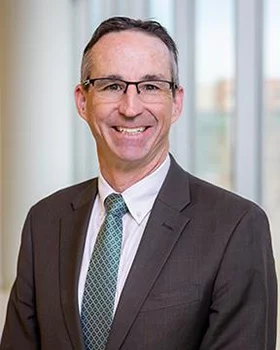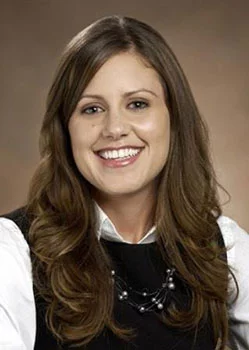
Despite the surgeries, the chemotherapies, the radiation therapies and the immunotherapies, Jennifer Melahn’s melanoma had spread from an innocuous bump on the tip of her right ear to her spine and beyond.
Then the 36-year-old Colorado Springs mother of three — one in high school, one in elementary school and a toddler — learned that her only chance of surviving more than a few months was a treatment that, while decades in the making, had been commercially approved just months before.
Dr. Theresa Medina, an oncologist at UCHealth University of Colorado Hospital, delivered the news. Medina happened to be the region’s foremost expert on that new treatment, called tumor-infiltrating lymphocyte therapy, or TIL (pronounced “till”).
Cancer takes root and spreads because its cells cloak themselves from immune-system cells that otherwise identify and destroy them. But cancer’s evasion is incomplete. A variety of immune cells do infiltrate and fight tumors. It’s just that, often, there are too few of them to beat the cancer back. Like a wildfire crew fighting a wind-fueled blaze, they need reinforcements.
Thanks to scientific research dating back nearly four decades, that’s what TIL delivers. It works by taking a surgically removed tumor sample, extracting immune cells under the umbrella of lymphocytes, multiplying them by the billions in a lab, reinfusing them into the patient, and then infusing an immune-system booster called interleukin 2 (IL-2). It’s not perfect: The melanoma clinical trial that led to the February 2024 approval of the first-ever commercial TIL therapy — Iovance’s Biotherapeutics‘ lifileucel (Amtagvi) — found that it shrank or erased melanoma tumors in about 30% of patients and that about 20% of patients saw complete remission.
Not great odds, Melahn recognized.
“Going into it, there wasn’t a choice,” she said. “I kept telling myself that, it’s not ‘if’ it will work for me, because it has to.”

Her melanoma advanced quickly
Melahn’s cancer started on that right ear tip in January 2022. The removal of that tumor seemed to be the end of it, but the melanoma returned in May 2023. Melahn was then eight months pregnant. Her doctors induced labor, and Melahn and husband Justin welcomed a healthy son, Milo, a month early. She was back at the hospital getting scans days later.
Melahn started on the immunotherapy Opdualag, but by August, it was clear that it wasn’t working. She had her right ear amputated completely as well as surgery to remove her right parotid gland, a salivary gland located near the ear, and about 70 lymph nodes from the right side of her neck. Radiation followed in October.
Melahn seemed cancer-free until the following May, when a lump on the right side of her neck triggered more scans and found the cancer in the bones of her neck. The immunotherapy combination of Opdivo (nivolumab) and Yervoy (ipilimumab) did nothing to slow Melahn’s metastatic melanoma. In fact, by August 2024, it had spread to her liver, a lung, and even her heart.

TIL therapy for melanoma takes a team
Since 2018, Medina and her colleagues at University of Colorado Hospital had been enrolling advanced-melanoma patients in the clinical trial that would eventually lead to lifilucel’s U.S. Food and Drug Administration approval. Theirs was the top-enrolling site, in fact. Surgical oncologist, Dr. Martin McCarter, was a key player in the multidisciplinary team that identified and worked with patients.

McCarter collaborated with Medina and others to locate the best-possible places to remove sections of tumors, each about the size of a smartphone icon (in four dimensions). McCarter performed about two dozen such procedures over the course of the study. McCarter and the team’s exceptional success in finding TIL-rich tumor sections led Iovance to film McCarter’s work for instructional purposes. His longstanding research interests also aligned with TIL.
“I study how tumors hide from the immune system, how they block the immune system, and how they induce these suppressor cells,” said McCarter, who is also a professor of surgical oncology at the University of Colorado School of Medicine on the Anschutz Medical Campus.
Suppressor cells are types of immune cells that suppress the antitumor immune cells. Cancer can make these suppressor cells more active, which knocks back the immune system’s ability to attack tumors.
Melahn became UCHealth’s first commercial TIL patient. McCarter extracted a section of tumor from her liver in November 2024. The team shipped it to Iovance’s Philadelphia facility, which filtered out suppressor cells and coaxed T-cells to multiply for about three weeks.
TIL therapy comes with side effects
Melahn then checked into the bone marrow transplant unit at University of Colorado Hospital for a week of chemotherapy and TIL reinfusion. The chemotherapy killed her appetite, and she was also feverish due to an infection that had taken root in her liver after surgery. While the TIL infusion went smoothly, the IL-2 infusions to energize the new legions of T cells caused intense muscle contractions that lasted an hour or so, a known side effect.
“I was nervous I was going to break my teeth,” Melahn said.
Also, her 5’4”, 110-pound frame added 45 pounds of retained fluids.
“I had trouble just walking around the nursing unit, which was tough when you’re somebody who’s very active normally,” she said.
None of this was a surprise to Melahn, who works as a software analyst for UCHealth. TIL therapy, like many cancer treatments, makes for a rough experience, and Medina and colleagues had made clear the potential complications. The question was whether the pain would pay off.

TIL therapy knocked back tumors
So far, the therapy has paid off. A mid-February scan found Melahn’s tumors have either shrunk or disappeared, and subsequent scans have shown continued progress — and no evidence of new cancer. That’s despite having had no treatments since that December stay at the hospital.

Over the July 4 weekend, Melahn and the family camped above Buena Vista and went on a 12-mile hike. She goes on bike rides with Justin, daughter Keegan, 18, and son Asher, 9. Milo, now 2, rides along in a carrier.
“I’m back doing all of those things, which is really great,” Melahn said.
Medina is optimistic about Melahn’s prospects.
“It’s really early, so we’ll have to see. But what we typically see is, with the response she’s had, this will be maintained for three, four, five years — even, potentially, a lifetime,” said Medina, who is also an associate professor of medical oncology at the University of Colorado School of Medicine.
It’s not the first such success she’s seen with TIL. The first advanced-melanoma patient enrolled in the trial Medina led at UCHealth is still cancer-free seven years later.
TIL therapy shows promise in treating other types of cancer

“I believe this is the future of cancer treatment,” McCarter said. “It’s personalized medicine to the nth degree, because you’re harvesting and enhancing the patient’s own immune system to attack their own tumors.”
Despite having had to deal with melanoma and all of the treatments it brought, Melahn considers herself fortunate.
“I say all the time, I’m a walking miracle,” she said. “TIL was tough, but I would do it, like, a hundred times.”
